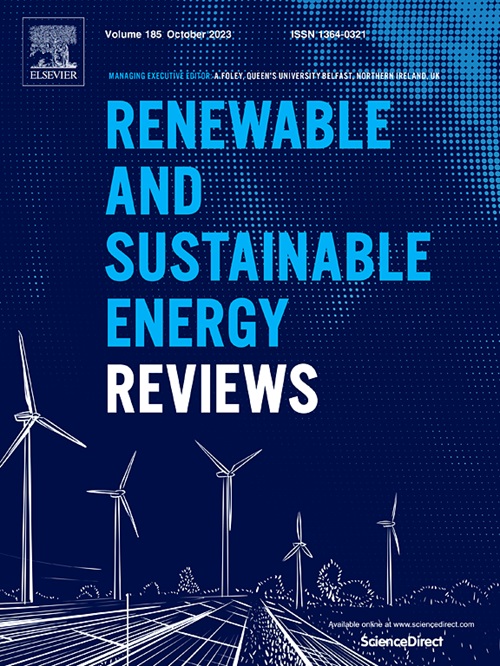Harnessing hydrogen and thermal energy storage: Sweden's path to a 100 % renewable energy system by 2045
IF 16.3
1区 工程技术
Q1 ENERGY & FUELS
引用次数: 0
Abstract
Sweden plans to decarbonize its energy sector by 2045 through initiatives such as electrification of transport & industry, wind power expansion, HYBRIT and increased use of biomass. Hitherto studies have predominantly focused on electricity sector. Nevertheless, the targets for 2045 necessitates studying the Swedish energy system at national scale in the context of sector coupling & storage. This work examines the role of thermal energy storage (TES) and hydrogen storage (HS) in the future energy system with high proportions of wind power. Three scenarios SWE_2045, NFF_2045 and RES_100 representing three different energy systems were simulated in EnergyPLAN modelling tool, incorporating TES, HS and sector integration. The results indicate that both TES and HS can improve flexibility of the system by enhancing wind integration. Heat pumps (HPs) coupled with TES can increase wind integration by 5–9% and also reduce the operation of thermal boilers and CHP, resulting in total fuel reduction by 2–3%, depending on the scenario. However, HS is not a viable option for storing excess electricity alone, as shown in SWE_2045 since it does not facilitate additional wind integration. It demonstrates better outcome mainly when there is a significant demand for hydrogen in the system, resulting in wind integration of 6–9%. However, HS does not contribute to the reduction in total fuel since it does not have an impact on the fuel input in district heating sector.

求助全文
约1分钟内获得全文
求助全文
来源期刊

Renewable and Sustainable Energy Reviews
工程技术-能源与燃料
CiteScore
31.20
自引率
5.70%
发文量
1055
审稿时长
62 days
期刊介绍:
The mission of Renewable and Sustainable Energy Reviews is to disseminate the most compelling and pertinent critical insights in renewable and sustainable energy, fostering collaboration among the research community, private sector, and policy and decision makers. The journal aims to exchange challenges, solutions, innovative concepts, and technologies, contributing to sustainable development, the transition to a low-carbon future, and the attainment of emissions targets outlined by the United Nations Framework Convention on Climate Change.
Renewable and Sustainable Energy Reviews publishes a diverse range of content, including review papers, original research, case studies, and analyses of new technologies, all featuring a substantial review component such as critique, comparison, or analysis. Introducing a distinctive paper type, Expert Insights, the journal presents commissioned mini-reviews authored by field leaders, addressing topics of significant interest. Case studies undergo consideration only if they showcase the work's applicability to other regions or contribute valuable insights to the broader field of renewable and sustainable energy. Notably, a bibliographic or literature review lacking critical analysis is deemed unsuitable for publication.
 求助内容:
求助内容: 应助结果提醒方式:
应助结果提醒方式:


